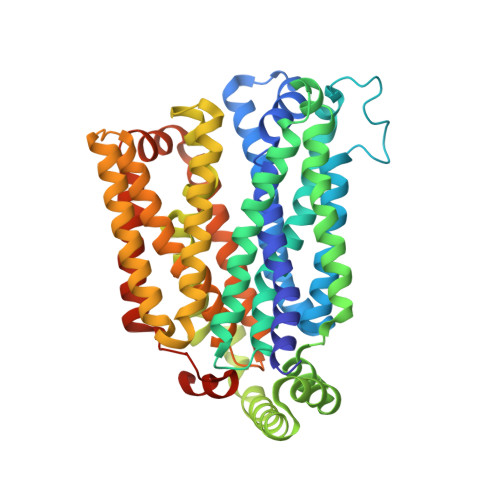Crystal structure of a bacterial homologue of glucose transporters GLUT1-4.
Sun, L., Zeng, X., Yan, C., Sun, X., Gong, X., Rao, Y., Yan, N.(2012) Nature 490: 361-366
- PubMed: 23075985
- DOI: https://doi.org/10.1038/nature11524
- Primary Citation of Related Structures:
4GBY, 4GBZ, 4GC0 - PubMed Abstract:
Glucose transporters are essential for metabolism of glucose in cells of diverse organisms from microbes to humans, exemplified by the disease-related human proteins GLUT1, 2, 3 and 4. Despite rigorous efforts, the structural information for GLUT1-4 or their homologues remains largely unknown. Here we report three related crystal structures of XylE, an Escherichia coli homologue of GLUT1-4, in complex with d-xylose, d-glucose and 6-bromo-6-deoxy-D-glucose, at resolutions of 2.8, 2.9 and 2.6 Å, respectively. The structure consists of a typical major facilitator superfamily fold of 12 transmembrane segments and a unique intracellular four-helix domain. XylE was captured in an outward-facing, partly occluded conformation. Most of the important amino acids responsible for recognition of D-xylose or d-glucose are invariant in GLUT1-4, suggesting functional and mechanistic conservations. Structure-based modelling of GLUT1-4 allows mapping and interpretation of disease-related mutations. The structural and biochemical information reported here constitutes an important framework for mechanistic understanding of glucose transporters and sugar porters in general.
Organizational Affiliation:
State Key Laboratory of Bio-membrane and Membrane Biotechnology, Center for Structural Biology, Tsinghua University, Beijing 100084, China.




















